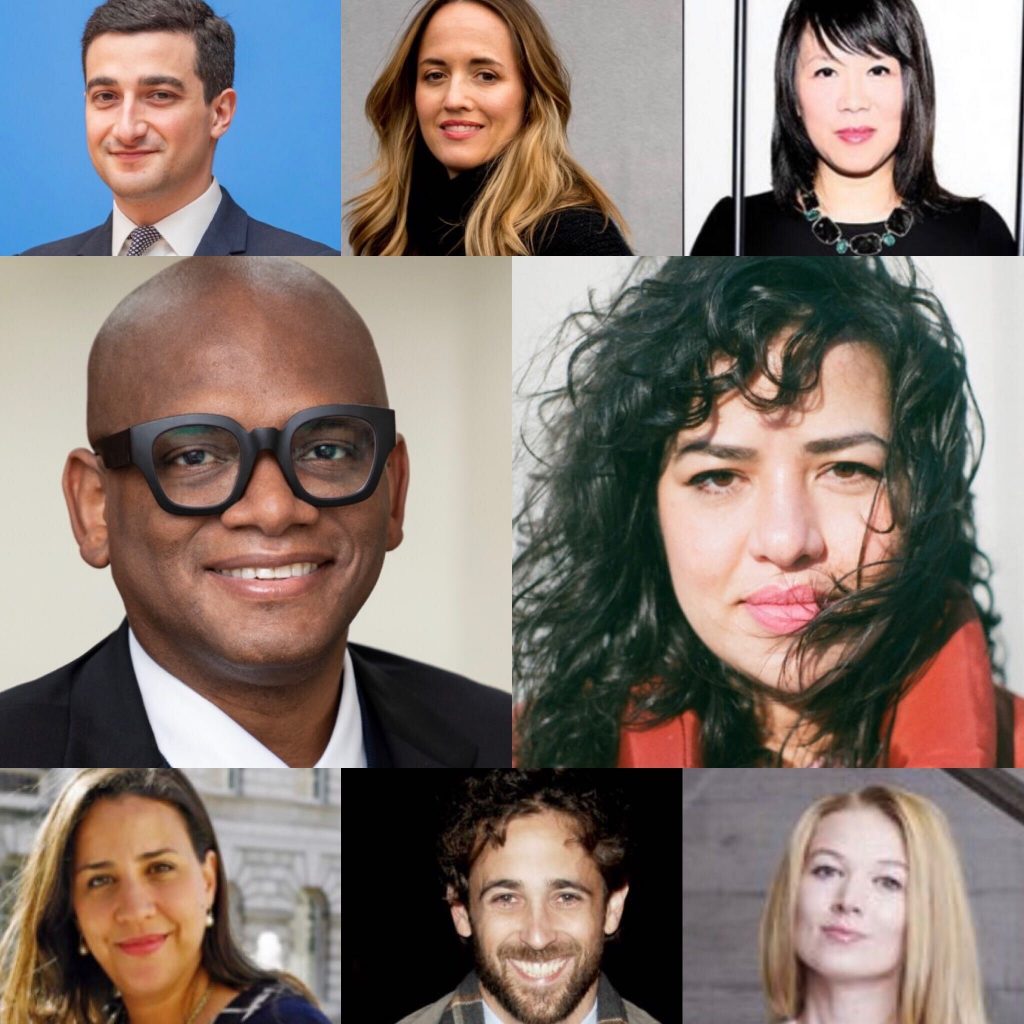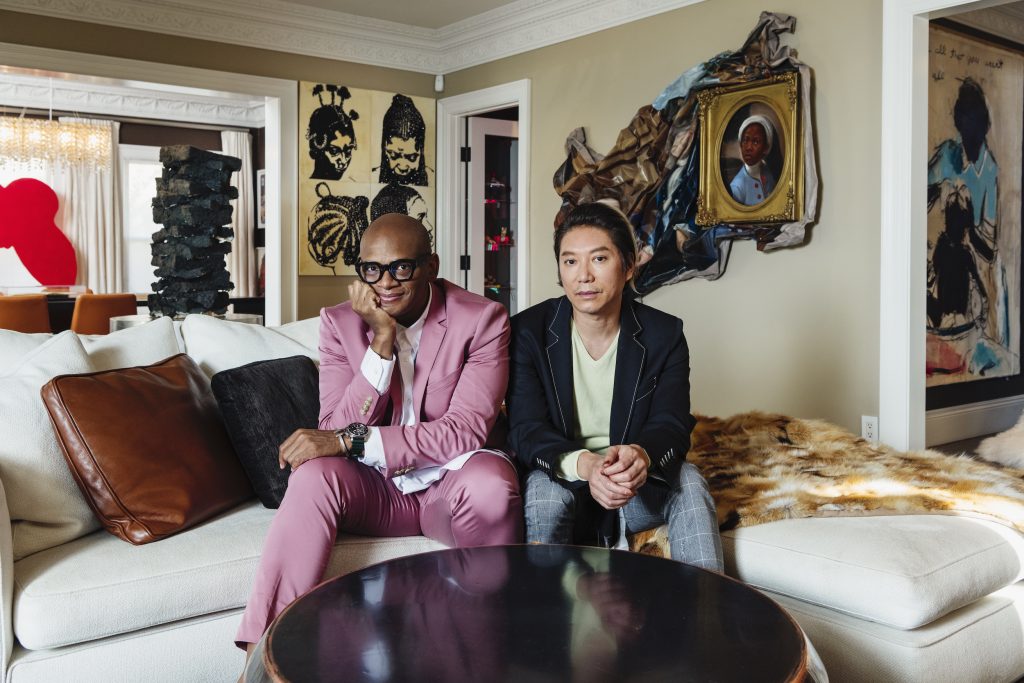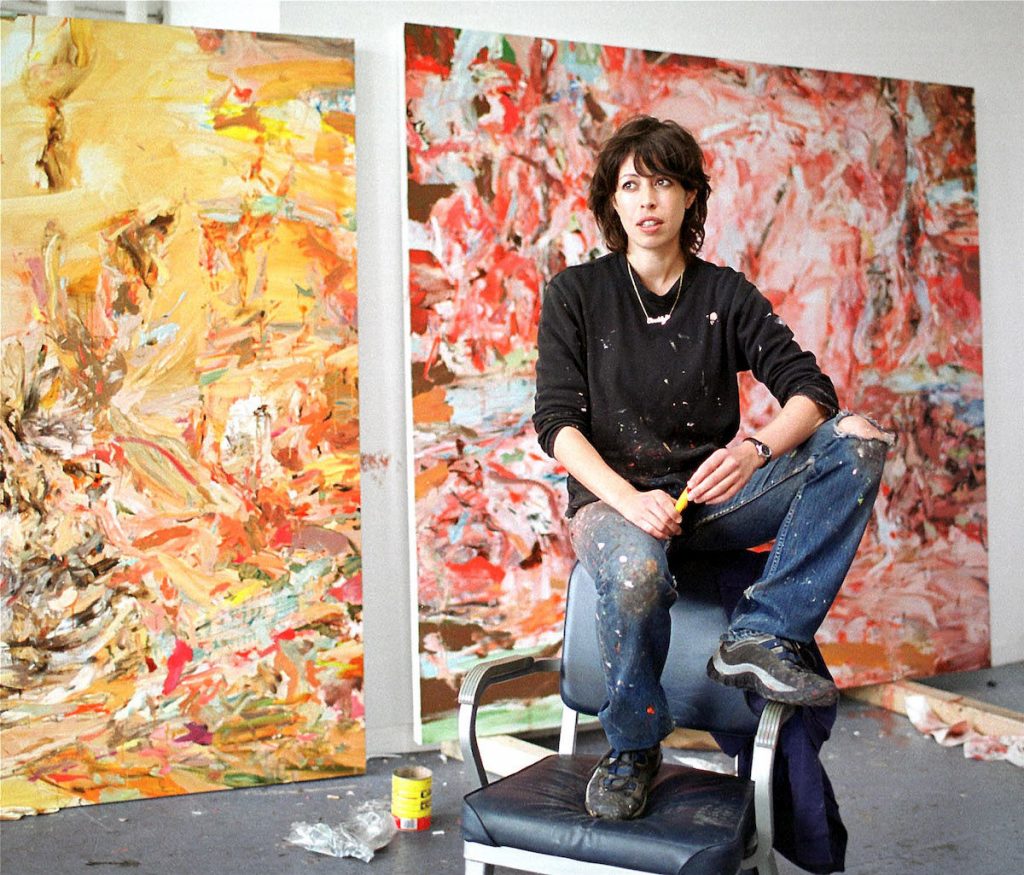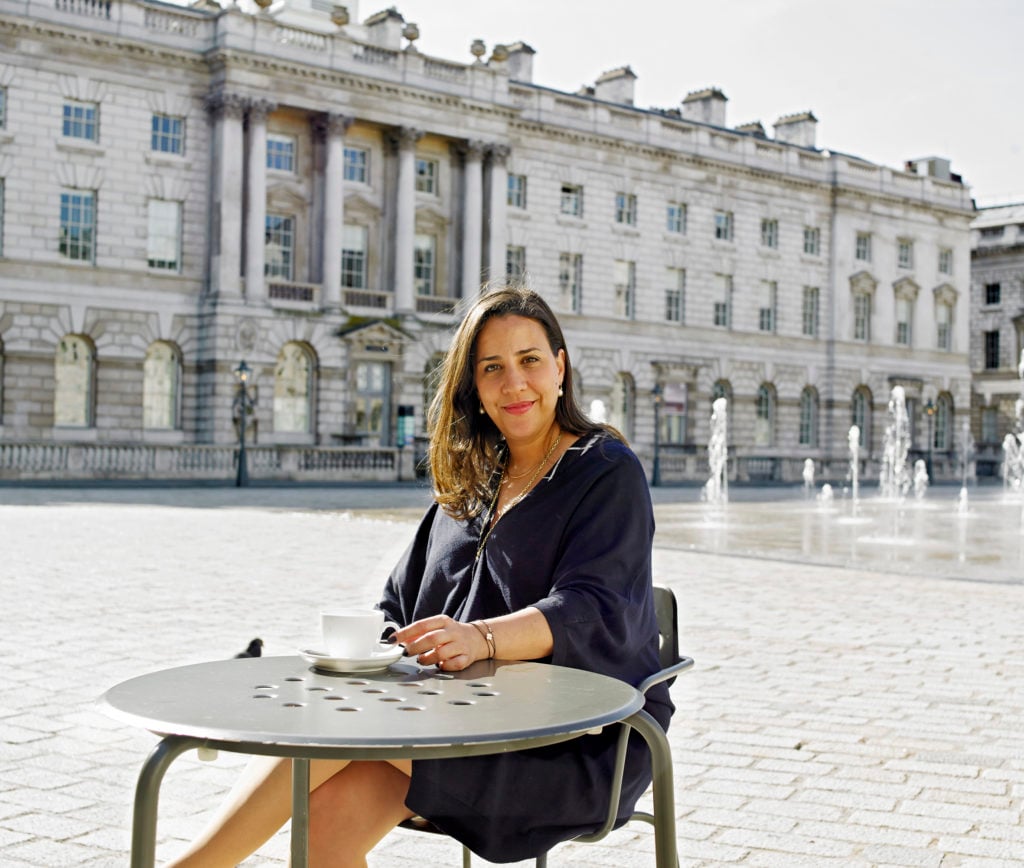People
Meet the New Innovators: 8 Institutional Change Agents Pushing Their Organizations Into the Future
These eight individuals are helping to reshape the contemporary art world from inside the institutions that created it.

These eight individuals are helping to reshape the contemporary art world from inside the institutions that created it.

Artnet News

A version of this article first appeared in the fall 2020 Artnet Intelligence Report, which you can download for free here.
It’s said that real change comes from within—and the gallery directors, auction house executives, and art-fair insiders on Artnet’s New Innovators List are proving that maxim true as they bring established institutions into the future.
See the complete list of the New Innovators here, our list of entrepreneurs here, and tastemakers here. Check back for more in-depth profiles in the coming days.

Arthur Lewis and Hao Nguyen in the living room of their Los Angeles home.
Arthur Lewis Photo by Brian Guido
Arthur Lewis describes his job as head of United Talent Agency’s fine arts department as “the best of all worlds.” While guiding artists through the entertainment industry—projects in TV, film, and publishing—he is introducing entertainment execs to the art world even as the boundaries between the two fields are increasingly blurry. At UTA Artist Space, the agency’s expansive project room, Lewis collaborates with gallerists like Mariane Ibrahim and Jessica Silverman to put emerging Black artists center stage.
This commitment extends to his home life: Lewis and his partner, hair salon owner Hau Nguyen, are influential patrons of women artists and artists of color, with a collection that includes Lauren Halsey and Jennie C. Jones. Lewis joined UTA in 2019 after executive positions at Kohl’s and the Gap. Looking to the future, he expects artists to take more control of their markets, forming independent think tanks and embracing online commerce. “I’m watching lots of them become very smart business people in this quiet time,” he says.
–Janelle Zara
Contemporary-art evening sales often feel like a roll call of the same 25 names. But in recent years, Sotheby’s has shaken things up, offering marquee works by Charles White, Jacob Lawrence, Georgia O’Keeffe, and Alma Thomas—all long siloed in American-art sales—in its megawatt contemporary auction. Bidding wars soon ignited, artist auction records shattered, and the evening-sale game changed.
Breaking down the “arbitrary distinctions” between genres has “been an intentional strategy,” says Galperin, who took over Sotheby’s contemporary evening auctions in New York in 2017. The new context, he adds, has drawn “a new base of collectors” to the work of 20th-century Black artists in particular.
Galperin’s willingness to upend tradition also came in handy when adapting the spring 2020 contemporary evening sale into a livestreamed event, which he describes as “a Peloton-like experience.” In the future, Galperin says, we’ll see more auctions, not fewer— even if most of them happen online and eschew strict categories and calendars. “Sales are never going to look like they did last year,” he predicts.
–Julia Halperin
It’s hard to remember now, but as recently as 2018, it was revolutionary for an elite dealer to produce an online viewing room. Sam Orlofsky ensured that Gagosian was one of the first mega-galleries—or galleries, period—to do so, spearheading a series of virtual-sales spaces accessible to buyers everywhere for a limited time. Each Gagosian online viewing room has been synced to a major moment on the art-market calendar, starting with Art Basel 2018, and centered on a unique theme contextualized with bespoke editorial and market content. Perhaps most notable: the iteration devoted to a single Albert Oehlen painting listed at $6 million—which, according to the gallery, sold for a price exceeding the artist’s then-auction record of $4.7 million.

Cecily Brown photographed in her studio in Manhattan for Gagosian’s Artist Spotlight . Photo: © David Howells.
This virtual-sales experience proved invaluable when the lockdown forced Gagosian to temporarily shutter its 17 worldwide locations this spring. At the time, Orlofsky said the gallery’s artists “saw the writing on the wall, and they were looking for some leadership from us, asking, ‘What are we gonna do about my show?’” His answer was Artist Spotlight, a novel concept in which one artwork by one Gagosian artist is made available weekly online. With works by Stanley Whitney, Sarah Sze, Cecily Brown, and others all ably sold to remote buyers at blue-chip prices, Orlofsky has again helped prove that big galleries can be nimble, too.
–Nate Freeman
More than a decade ago, armed with an art-history degree from UCLA, Thao Nguyen pitched Hollywood talent agency CAA an idea: to expand its roster to include artists, architects, and designers with TV and film projects at a time when entertainment-fine-art crossover was still relatively novel. Her first client was Dutch architect Rem Koolhaas, followed by the likes of Julian Schnabel and Steve McQueen on their respective films, The Diving Bell and the Butterfly and 12 Years a Slave. More recently, she began working with video artist Kahlil Joseph, photographer Alex Prager, and video artist and sculptor Arthur Jafa. “The agency’s role, at least in my mind, is to democratize art,” Nguyen says. “It’s taking art outside of white walls to a wider audience.”
–Janelle Zara
When Frieze canceled the 2020 edition of its New York fair this spring, it had foresight on its side. For months, the company had been developing an online viewing room that could (and did) become its new main event. Masterminded by former Frieze New York director Loring Randolph, the platform was the most stylish, navigable, and streamlined of the many online viewing rooms launched (often hurriedly) in the shutdown’s early days. A few high-touch elements helped, too, including the personal assistance with logging in that Randolph and her team offered some less-than-tech-savvy collectors.
Frieze is now operating version 2.0 of its viewing room to stand in for the canceled Frieze London and Frieze Masters. Upgrades include the ability to privately bookmark and publicly favorite individual artworks, as well as live-chat directly with dealers. (Unlike with the first edition, galleries have to pay to participate in this one.)
With the future of live events in question, Randolph believes that the art fair must become a hybrid online-in-person experience. She speculates that Frieze’s viewing rooms could be used 365 days a year by member dealers, transforming the organization into a mash-up of professional association and special-events company.
“People are going to be more choosy about what they travel to do. They will want more-exclusive and private experiences, and we are going to see much more active online events,” says Randolph. Soon, she will be experiencing the fair as a client. Last month, she began a new role as director of the Nancy A. Nasher and David J. Haemisegger Collection.
–Julia Halperin

Touria El Glaoui, founding director of 154: Contemporary African Art Fair. Photo: © Victoria Birkinshaw, courtesy 154.
If American and European collectors can rattle off more names of living African artists today than they could five years ago, they owe at least part of that expanded knowledge to Touria El Glaoui. The Moroccan former wealth-management consultant was driven to establish the 1-54: Contemporary African Art Fair in 2013 in response to what she saw as a lack of opportunity for African artists to gain international exposure. Today, the fair—named after the 54 countries on the continent—operates must-see editions in New York, London, and Marrakesh.
Since the social-distancing era required the cancellation of the 2020 New York edition and a scaled-back London version this fall, El Glaoui is also working to develop an enhanced digital platform that she suspects will remain in place even after regularly scheduled fair programming resumes. “We have now lived through something,” she says, “that will make the art market less global than before and more local.”
–Rebecca Anne Proctor
Long before the lockdown forced the merry-go-round of art fairs to grind to a halt, Vanessa Carlos, cofounder of London’s Carlos/Ishikawa gallery, had already conceived an alternative model in which dealers could show work internationally—on a smaller scale and at a slower pace—through her gallery-share initiative Condo. (Its app also predated the current wave of online viewing rooms.) Since its founding, in 2016, Condo has expanded from London to New York, Shanghai, Mexico City, and São Paulo (and spawned imitations around the globe), ushering in a new era of collaboration among galleries. In the shadow of 2020, Carlos predicts, “I think the art world will become more fragmented”—a shift that will force institutions to think smaller rather than larger. The good news, for Carlos, is that for the time being, the kind of intimate in-person art experience she advocates for is also the only one available.
–Naomi Rea
When lockdowns swept the United States, galleries were forced to develop some kind of online programming if they were going to have any programming at all. But David Zwirner had a head start: the gallery had hired Elena Soboleva as its first online sales director back in mid-2018. Under her watch, Zwirner’s online-sales apparatus—first initiated in 2017—has grown significantly. Between mid-March and mid-July, the gallery launched 27 online exhibitions, including shows of work by Harold Ancart and Marcel Dzama that sold out. It also unveiled a series of viewing rooms dedicated to secondary-market works priced at over $1 million; invited smaller galleries to offer art through its innovative online gallery-share Platform; and staged virtual studio visits.
When galleries in Hong Kong, Paris, and London reopened, Soboleva did not slow down. In fact, Zwirner debuted two new works by Kerry James Marshall online, a move that would have been unthinkable pre-shutdown. Soboleva describes the online apparatus as “truly shoulder to shoulder with our physical galleries—a simple concept but a radical idea when one truly embraces it.”
–Nate Freeman